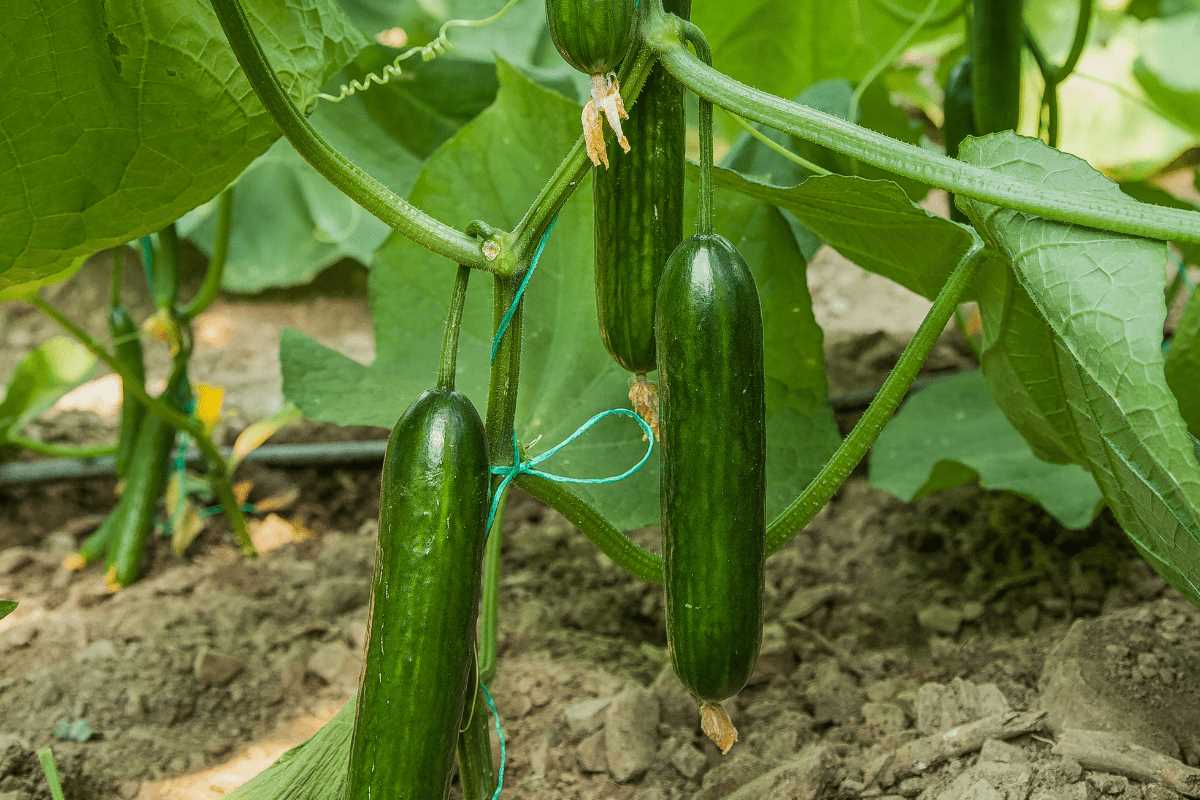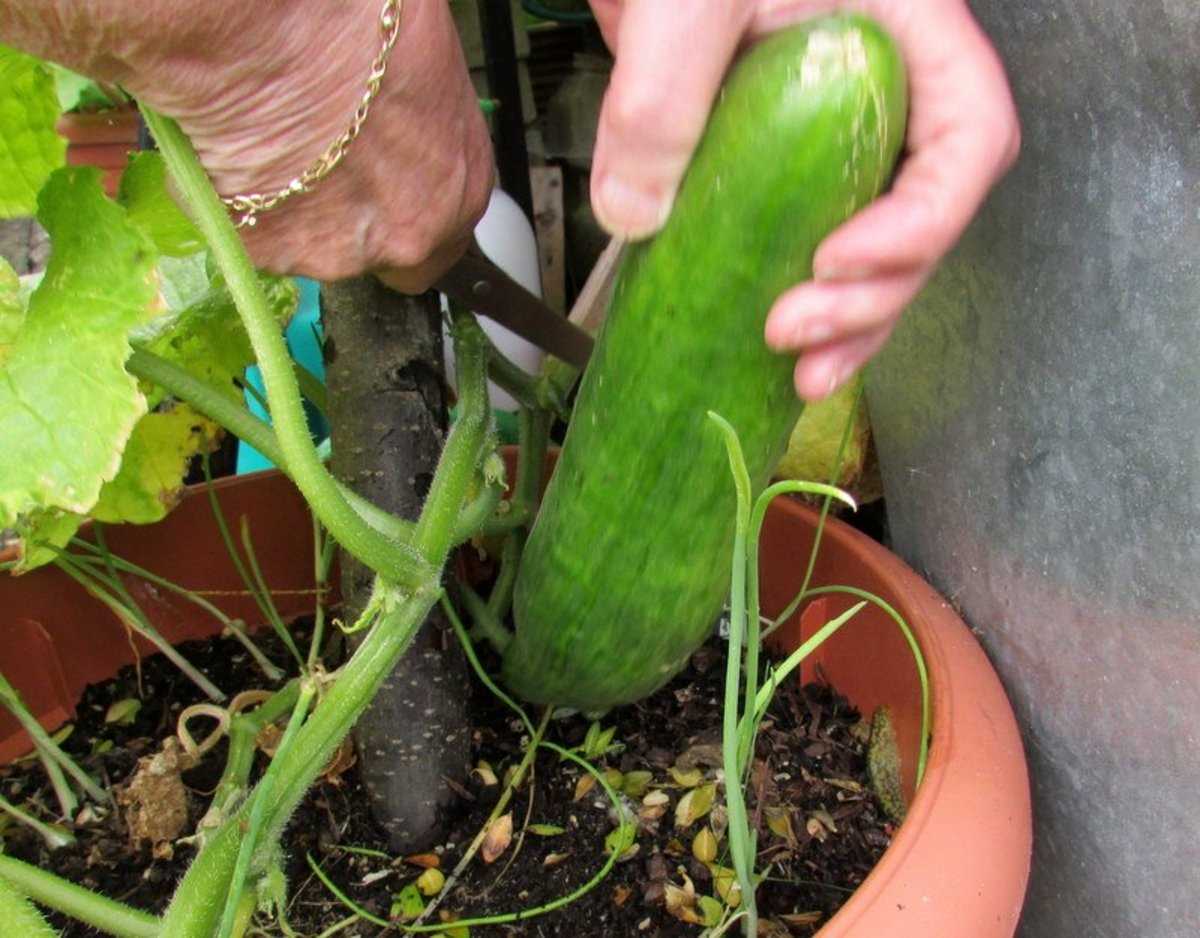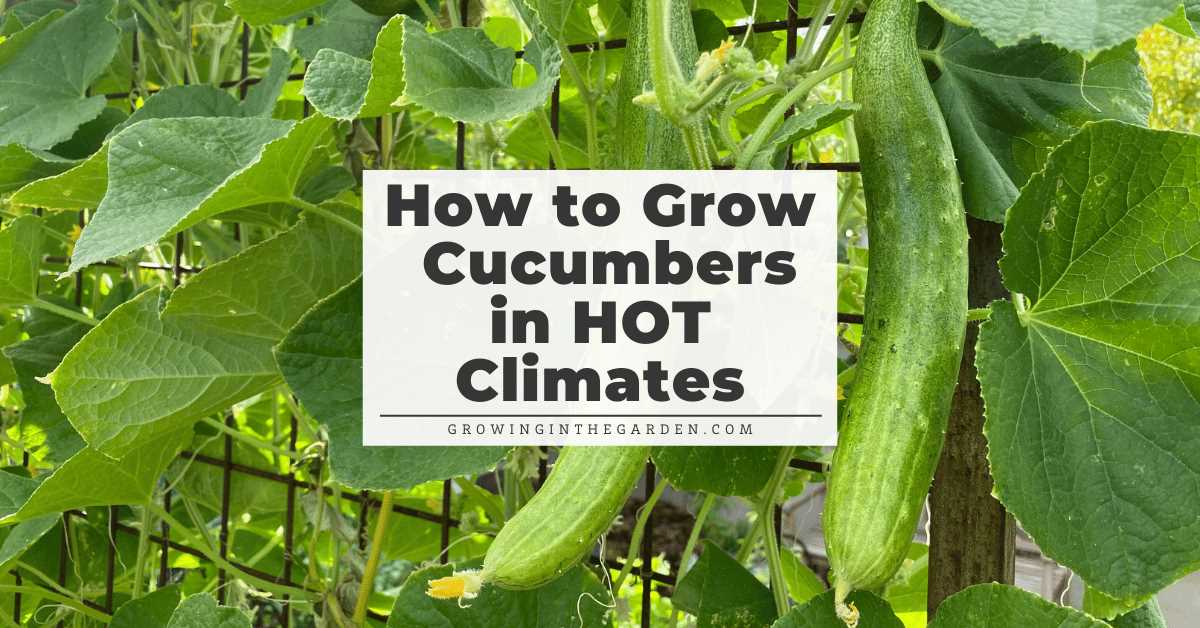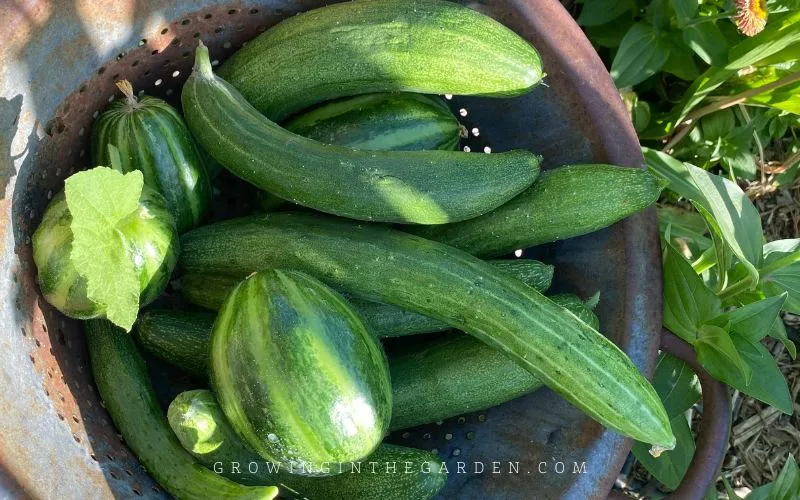- Choosing the Right Variety of Cucumbers
- Preparing the Bags for Planting
- Setting Up the Bag Garden
- 1. Choose the right bags
- 2. Fill the bags with soil
- 3. Prepare the bags for planting
- 4. Plant the cucumber seeds or seedlings
- 5. Water the bags
- 6. Provide support structures
- 7. Place the bags in a suitable location
- 8. Maintain the bag garden
- Planting Cucumber Seeds or Seedlings
- Planting Cucumber Seeds:
- Planting Cucumber Seedlings:
- Caring for Cucumber Plants
- Watering
- Fertilizing
- Supporting
- Weed Control
- Pest and Disease Control
- Harvesting
- Storage
- Crop Rotation
- Watering and Fertilizing Cucumber Plants
- Watering
- Fertilizing
- Pest and Disease Control
- Pest Control
- Disease Control
- Harvesting and Enjoying Fresh Cucumbers
- Picking Cucumbers
- Storing Cucumbers
- Enjoying Fresh Cucumbers
- “Question-Answer”
- Can I grow cucumbers in bags in September?
- What type of bag should I use for growing cucumbers?
- Do I need to use fertilizer when growing cucumbers in bags?
- How often should I water cucumbers grown in bags?
- Can I grow cucumbers in bags indoors?
- What should I do if frost is in the forecast?
- “Video” Cucumbers will grow in a moment! Just pour this over the cucumber shoots!
September is often associated with the end of the summer gardening season, but with the right techniques, you can continue to enjoy fresh cucumbers well into the fall. One innovative method is growing cucumbers in bags, which allows you to control the environment and extend the growing season. This article will guide you through the process, from selecting the right bags to caring for your cucumber plants.
Growing cucumbers in bags offers several advantages. Firstly, it allows you to control the soil conditions more easily, ensuring optimal growth and productivity. Secondly, bags provide excellent drainage, preventing waterlogging and related problems. Additionally, bags can be moved around, allowing you to take advantage of the best sunlight locations and protect the plants from frost.
To get started, choose a suitable bag for your cucumber plants. Large reusable grow bags or fabric pots with good drainage holes are ideal. Fill the bags with a well-draining potting mix that is rich in organic matter. This will provide the cucumbers with the nutrients they need to thrive. Make sure to leave enough space in the bag for the roots to spread and develop.
Once your bags are prepared, it’s time to plant your cucumber seedlings. Choose a cucumber variety that is suitable for your climate and the amount of sunlight available in your chosen location. Plant the seedlings deep enough to cover the first few sets of leaves, as this will encourage the development of a strong root system.
Choosing the Right Variety of Cucumbers
Cucumbers come in a variety of shapes, sizes, and flavors, making it important to choose the right variety for your growing needs. Here are some factors to consider when selecting cucumber varieties:
- Growing Space: Determine the amount of space you have available for cucumber plants. If you have limited space, consider growing compact or bush varieties that don’t require as much room as vining varieties.
- Growing Method: Consider how you plan to grow your cucumbers. If you’re growing them in bags or containers, choose varieties that are well-suited for vertical or compact growing.
- Taste Preference: Cucumber varieties can vary in taste, with some being sweeter or more bitter than others. Consider your personal taste preference when selecting a cucumber variety.
- Time to Maturity: Different cucumber varieties have different maturing times. If you’re looking for an early harvest, choose varieties that mature quickly.
- Disease Resistance: Some cucumber varieties are more resistant to common diseases like powdery mildew or cucumber mosaic virus. Choose disease-resistant varieties if you’re concerned about potential infections.
When choosing cucumber varieties, it’s also worth considering if you want pickling cucumbers or slicing cucumbers. Pickling cucumbers are typically smaller and have a more crisp texture, while slicing cucumbers are larger and are better for eating fresh in salads or sandwiches.
Below is a table listing some popular cucumber varieties and their characteristics:
| Variety | Characteristics |
|---|---|
| Marketmore 76 | Good disease resistance, tender skin |
| English Telegraph | Long, thin-skinned, ideal for slicing |
| Picklebush | Compact plant, small pickling cucumbers |
| Armenian | Spiky fruits, sweet flavor |
| Lemon Cucumber | Round, yellow cucumbers with mild flavor |
Remember to choose cucumber varieties that suit your specific needs and growing conditions. Experiment with different varieties to find your favorites and enjoy a bountiful cucumber harvest!
Preparing the Bags for Planting

Before you start growing cucumbers in bags, you need to prepare the bags properly. Here are the steps to follow:
- Choose the Right Bags: Select high-quality, sturdy bags that can hold the weight of the soil and the cucumber plants. The bags should have drainage holes at the bottom to allow excess water to escape.
- Clean the Bags: Make sure the bags are clean and free from any debris or contaminants. You can wash the bags with water and mild soap if needed.
- Fill the Bags: Fill the bags with a good quality potting mix or a mixture of compost, garden soil, and peat moss. Leave a few inches of space at the top of the bag to allow for watering and for the plants to grow.
- Add Fertilizer: Incorporate a slow-release fertilizer into the soil in the bags. This will provide the necessary nutrients for the cucumber plants to thrive.
- Moisten the Soil: Before planting the cucumber seeds or seedlings, make sure the soil in the bags is evenly moist. This will help the plants establish their roots and encourage healthy growth.
Once you have prepared the bags, you are ready to plant your cucumber seeds or seedlings. Make sure to choose a sunny location and provide proper care and maintenance throughout the growing season. With the right preparation and care, you can enjoy fresh cucumbers from your bags until the first frost.
Setting Up the Bag Garden

To successfully grow cucumbers in bags in September, you will need to properly set up your bag garden. Follow the steps below to get started:
1. Choose the right bags
When selecting bags for your cucumber garden, it’s important to choose the right ones. Opt for high-quality grow bags made from durable materials that allow for proper drainage. The size of the bags should be suitable for growing cucumbers, with a capacity of at least 10-15 liters.
2. Fill the bags with soil
Fill each bag with a nutrient-rich potting soil. Avoid using garden soil, as it may contain pests or diseases that can harm your cucumber plants. The soil should be well-draining to prevent waterlogging.
3. Prepare the bags for planting
Prior to planting, create small holes in the soil surface of each bag. These holes will serve as the planting pockets for the cucumber seeds or seedlings.
4. Plant the cucumber seeds or seedlings
If you are using seeds, plant them in the prepared holes according to the recommended planting depth provided on the seed packet. Cover the seeds with soil and lightly press it down to ensure good seed-to-soil contact. If you are using seedlings, carefully transplant them into the planting pockets.
5. Water the bags
After planting, water the bags thoroughly to provide moisture to the cucumber seeds or seedlings. This will help them establish their roots and promote healthy growth. Ensure that the soil remains consistently moist but not overly wet.
6. Provide support structures
Cucumber plants are climbers and require support structures to grow vertically. Install trellises, stakes, or cages near each bag to support the cucumber vines as they grow. This will help optimize space and prevent the plants from sprawling on the ground.
7. Place the bags in a suitable location
Choose a sunny location for your bag garden, as cucumbers require at least 6-8 hours of direct sunlight daily. Ensure that the bags are placed where they will not be obstructed by other plants or structures.
8. Maintain the bag garden
Regularly monitor the soil moisture levels in the bags and water as needed. Keep an eye out for pests and diseases, and take appropriate measures to control them. Additionally, provide adequate nutrients to the cucumber plants by using a balanced fertilizer according to the package instructions.
By following these steps, you can effectively set up your bag garden for growing cucumbers in September. Enjoy a bountiful harvest of fresh cucumbers until the arrival of frost!
Planting Cucumber Seeds or Seedlings
If you are planning to grow cucumbers in bags in September, you have two options for planting – using cucumber seeds or seedlings.
Planting Cucumber Seeds:
1. Select a cucumber variety that is suitable for growing in containers or bags. Look for varieties that have a shorter maturity period.
2. Prepare the bag by filling it with a well-draining potting mix. Ensure that the bag has drainage holes at the bottom.
3. Sow the cucumber seeds directly into the bag, following the recommended spacing mentioned on the seed packet. Cover the seeds with a thin layer of soil and gently press them down.
4. Water the bag thoroughly after sowing the seeds. Keep the soil consistently moist, but not waterlogged, throughout the growing season.
5. Place the bag in a sunny location where the cucumbers will receive at least 6-8 hours of direct sunlight each day.
6. As the cucumbers grow, provide support for the vines by placing trellises or stakes in the bag. This will prevent the plants from falling over and make harvesting easier.
Planting Cucumber Seedlings:
1. Purchase cucumber seedlings from a reputable nursery or start your own indoors about 4-6 weeks before planting. Look for healthy seedlings with strong stems and vibrant leaves.
2. Prepare the bag by filling it with a well-draining potting mix. Ensure that the bag has drainage holes at the bottom.
3. Dig a hole in the bag that is slightly larger than the root ball of the cucumber seedling.
4. Gently remove the seedling from its container and place it into the hole. Backfill the hole with soil and firm it gently around the base of the seedling.
5. Water the bag thoroughly after planting the seedling to settle the soil and ensure good root-to-soil contact.
6. Place the bag in a sunny location where the cucumbers will receive at least 6-8 hours of direct sunlight each day.
7. Provide support for the cucumber plants as they grow by using trellises or stakes. This will help the vines to climb, prevent them from falling over, and make harvesting easier.
Whether you choose to plant cucumber seeds or seedlings, remember to provide regular water, feed the plants with a balanced fertilizer, and monitor for pests and diseases. With proper care, you can enjoy fresh cucumbers from your bags until frost arrives.
Caring for Cucumber Plants
Watering

Cucumber plants have high water needs, so regular and adequate watering is crucial for their growth and fruit production. Water them deeply at least twice a week, ensuring that the soil remains moist but not waterlogged. Avoid overhead watering as it can increase the risk of diseases. Instead, use a drip irrigation system or water directly at the base of the plants.
Fertilizing
Cucumber plants benefit from regular fertilization to promote healthy growth and higher yields. Use a balanced fertilizer with equal amounts of nitrogen, phosphorus, and potassium. Apply the fertilizer according to the manufacturer’s instructions, usually once a month. Avoid over-fertilizing, as it can lead to excessive foliage growth and reduced fruit production.
Supporting
As cucumber plants grow, they tend to vine and spread. Providing support for the plants helps keep the vines off the ground, prevents rotting, and allows for better air circulation. Use trellises, stakes, or cages to support the plants. Train the vines to grow vertically, tying them loosely to the support structure as they lengthen.
Weed Control
Keep the area around the cucumber plants free from weeds, as they compete for nutrients and water. Regularly remove any weeds that sprout near the plants to ensure that they have optimal growing conditions.
Pest and Disease Control

Cucumber plants are susceptible to various pests and diseases, including aphids, cucumber beetles, powdery mildew, and fungal infections. Monitor the plants regularly and take necessary measures to control any infestations or infections, such as applying organic pesticides, removing infected leaves, or using netting to prevent beetle damage.
Harvesting
Cucumbers can be harvested when they reach the desired size, typically around 6-8 inches long. Harvest them regularly to encourage continuous fruit production. Use a sharp knife or shears to cut the cucumbers from the vine, being careful not to damage the plant or other developing fruits.
Storage

After harvesting cucumbers, store them in a cool, dry place or refrigerate them to prolong their shelf life. Avoid storing them near fruits that produce ethylene gas, such as tomatoes or bananas, as it can accelerate ripening and spoilage.
Crop Rotation
To prevent diseases and maintain soil fertility, practice crop rotation by planting cucumbers in a different location each year. This helps reduce the risk of soilborne pests and diseases and allows the soil to regenerate nutrients.
Watering and Fertilizing Cucumber Plants
Cucumber plants require consistent watering to ensure proper growth and fruit development. They have shallow root systems and are sensitive to drought, so it’s important to provide them with sufficient moisture.
Watering
When watering cucumber plants, it’s best to use a deep irrigation method. This involves applying water directly to the soil rather than sprinkling it over the leaves. Deep irrigation encourages the roots to grow deeper and helps the plants withstand dry periods.
During the growing season, cucumber plants typically need about 1 to 1.5 inches of water per week. However, this may vary depending on the weather conditions and the soil type. It’s best to monitor the moisture levels in the soil and adjust the watering accordingly.
A good way to check if the soil is adequately moist is to stick your finger about an inch into the soil. If it feels dry at that depth, it’s time to water the plants. Avoid overwatering, as this can lead to root rot and other problems.
Fertilizing
Cucumber plants are heavy feeders and require regular fertilization to produce abundant and healthy fruits. Before planting, it’s recommended to add organic matter, such as compost or well-rotted manure, to the soil to provide essential nutrients.
During the growing season, it’s important to continue fertilizing the cucumber plants. A balanced fertilizer, such as a 10-10-10 blend, can be applied every two weeks. Alternatively, you can use a slow-release fertilizer according to the package instructions.
Avoid using excessive amounts of nitrogen-rich fertilizers, as this can result in excessive leaf growth at the expense of fruit production. It’s best to follow the recommended application rates and avoid applying fertilizer directly to the plant stems or leaves to prevent burning.
In addition to regular fertilization, it’s important to monitor the plants for any signs of nutrient deficiencies. For example, yellowing leaves may indicate a lack of nitrogen, while pale leaves may suggest a lack of iron. If any deficiencies are observed, appropriate fertilizers or amendments can be applied.
By providing adequate water and nutrients, you can ensure healthy and productive cucumber plants that will yield a bountiful harvest throughout the growing season.
Pest and Disease Control
Growing cucumbers in bags can be a rewarding experience, but it is important to be aware of common pests and diseases that can affect your crop. Taking preventative measures and addressing issues promptly can help ensure a healthy cucumber harvest.
Pest Control
Cucumbers are susceptible to various insect pests, such as aphids, cucumber beetles, and spider mites. Here are some tips to control and prevent pest infestations:
- Inspect regularly: Regularly inspect your cucumber plants for signs of pests, such as discolored leaves, wilting, or visible insects.
- Remove infested plants: If you notice any plants with severe pest infestations, remove them from your garden to prevent further spread.
- Natural predators: Encourage natural predators, such as ladybugs and lacewings, to help control aphids and other common pests.
- Insecticidal soap: Use insecticidal soap to control soft-bodied insects like aphids. Follow the instructions carefully and avoid spraying when temperatures are high.
Disease Control
Cucumbers are also prone to various diseases, including powdery mildew, cucumber mosaic virus, and bacterial wilt. Here are some strategies to help prevent and manage cucumber diseases:
- Clean and rotate: Clean and rotate your gardening tools and containers regularly to prevent the spread of disease.
- Variety selection: Choose cucumber varieties that are resistant to common diseases in your area.
- Adequate spacing: Provide enough space between plants to ensure good air circulation, which can help prevent the development of fungal diseases.
- Fungicides: If necessary, use fungicides specifically formulated for cucumbers to control fungal diseases. Follow the instructions carefully.
By following these pest and disease control measures, you can help maintain a healthy cucumber crop and enjoy fresh cucumbers until frost.
Harvesting and Enjoying Fresh Cucumbers
After successfully growing cucumbers in bags throughout September, it’s time to harvest and enjoy the fresh cucumbers you have grown. Here are some tips to help you make the most out of your cucumber harvest:
Picking Cucumbers
When it comes to picking cucumbers, it’s important to do it at the right time. Cucumbers are ready to be harvested when they have reached a length of 6 to 8 inches and have a firm texture. Be sure to harvest them before they turn yellow and become overripe.
To pick cucumbers, gently hold the cucumber near the base and twist it off the stem. Avoid using excessive force as it can damage the plant and future cucumber production.
Storing Cucumbers
Once you have harvested your cucumbers, it’s important to store them properly to maintain their freshness and flavor. Here are some options for storing cucumbers:
- Refrigerator: Cucumbers can be stored in the refrigerator for about a week. Place them in a plastic bag to help retain moisture and keep them crisp.
- Pickle them: If you have an abundance of cucumbers, consider pickling them. Cucumbers make delicious pickles that can be enjoyed for months after the harvest.
- Freezing: If you can’t consume all your cucumbers in time, you can also freeze them. Simply slice the cucumbers and place them in freezer bags. Frozen cucumbers work well in smoothies or soups.
Enjoying Fresh Cucumbers
There are many delicious ways to enjoy fresh cucumbers. Here are some ideas to get you started:
- Salads: Cucumbers are a great addition to any salad. Slice them and toss them with lettuce, tomatoes, and your favorite dressing for a refreshing salad.
- Snacks: Enjoy cucumbers as a healthy snack. Slice them and enjoy them plain or with a dip of your choice.
- Sandwiches and Wraps: Add cucumber slices to your sandwiches or wraps for an extra crunch and freshness.
- Cucumber Water: Infuse your water with slices of cucumber for a refreshing and hydrating beverage.
- Gazpacho: Make a refreshing gazpacho soup with cucumbers, tomatoes, and other fresh vegetables.
With these tips, you can enjoy the fruits of your labor and savor the taste of fresh cucumbers until frost arrives. Don’t forget to save some seeds for next year’s cucumber growing season!
“Question-Answer”
Can I grow cucumbers in bags in September?
Yes, you can definitely grow cucumbers in bags in September. Although it may be getting closer to frost, cucumbers are a fast-growing vegetable and can be successfully grown in bags during this time.
What type of bag should I use for growing cucumbers?
You can use any type of sturdy bag for growing cucumbers. It can be a traditional garden bag or even a burlap sack. Just make sure it is large enough to accommodate the cucumber plant’s root system and has drainage holes at the bottom.
Do I need to use fertilizer when growing cucumbers in bags?
Yes, it is important to use fertilizer when growing cucumbers in bags. Since the plants will be confined to a small space, they will rely heavily on the nutrients in the soil. You can use a balanced fertilizer or one specifically formulated for vegetables.
How often should I water cucumbers grown in bags?
Cucumbers grown in bags will require regular watering. It is important to keep the soil moist but not waterlogged. Depending on the weather conditions, you may need to water them every 1-2 days. Be sure to check the moisture level of the soil before watering.
Can I grow cucumbers in bags indoors?
Yes, you can definitely grow cucumbers in bags indoors. You will need to provide them with sufficient light, either through a sunny window or artificial grow lights. Just ensure that the indoor environment is warm and humid, as cucumbers thrive in these conditions.
What should I do if frost is in the forecast?
If frost is in the forecast, it is important to protect your cucumber plants. You can cover them with a frost blanket or move them indoors if they are grown in bags. Cucumbers are sensitive to cold temperatures and frost can damage or kill the plants.







